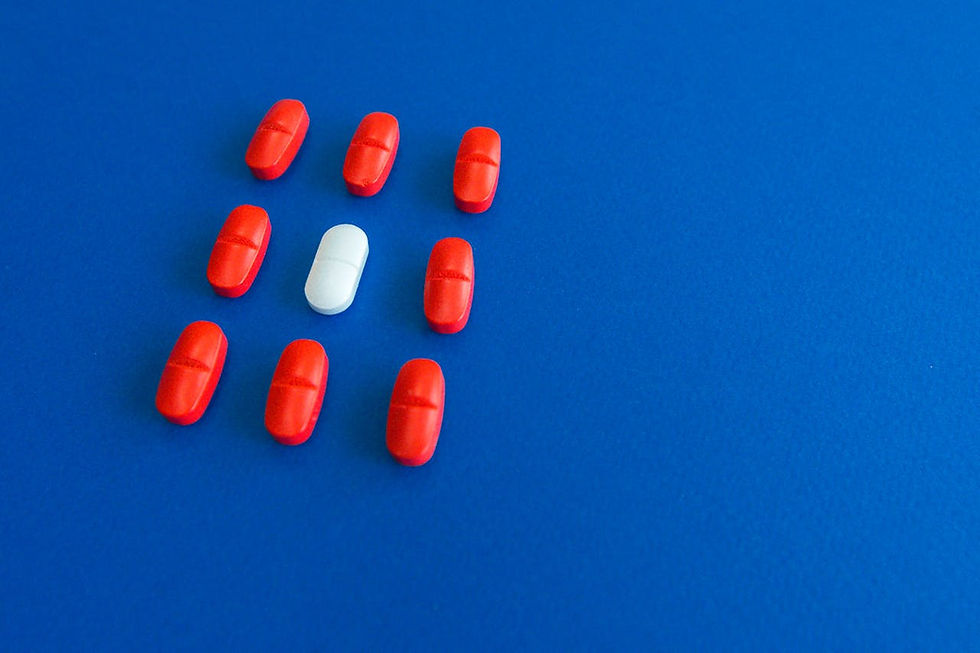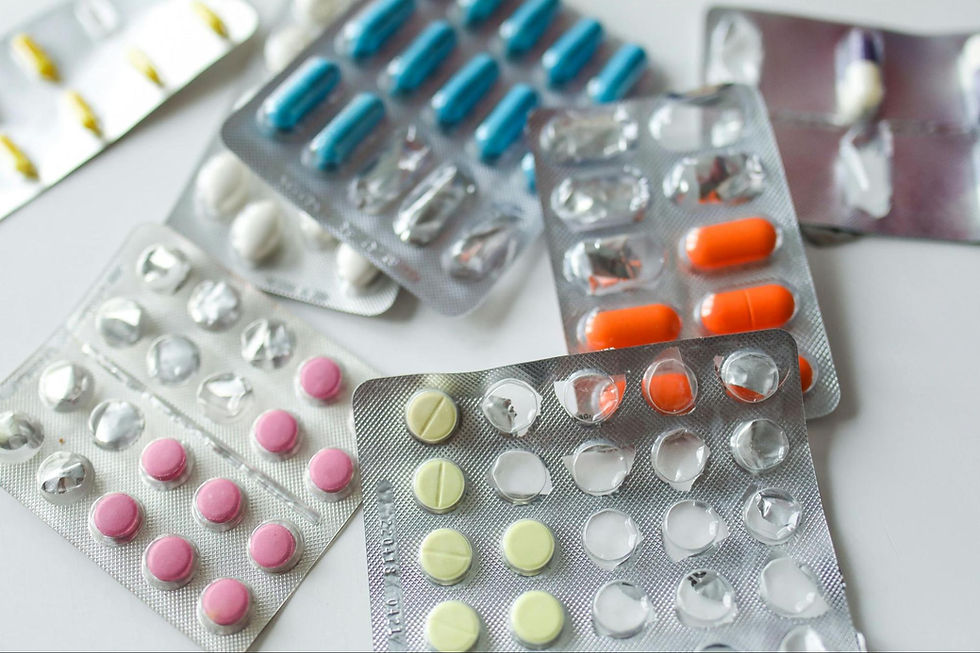Point-of-Care Dispensing for Rural Clinics: Transforming Healthcare Access
- Christopher Johnson
- Aug 7
- 8 min read

Rural healthcare faces unique challenges that urban medical facilities rarely encounter. Limited access to pharmacies, long travel distances, and staffing shortages create barriers that can prevent patients from receiving timely medication. These obstacles often force rural residents to drive hours to fill prescriptions or go without essential treatments altogether.
Point-of-care dispensing for rural clinics emerges as a transformative solution that addresses these critical gaps in healthcare delivery. This innovative approach allows healthcare providers to dispense medications directly from their clinical settings, eliminating the need for patients to make separate trips to distant pharmacies. Integrating medication dispensing into routine medical visits allows rural clinics to significantly improve patient outcomes and support better medication adherence.
The implementation of point-of-care dispensing systems represents a vital strategy for ensuring equitable healthcare access. Rural communities can finally receive the same level of pharmaceutical care available in urban areas, making this technology essential for modern rural healthcare delivery.
What Is Point-of-Care Dispensing for Rural Clinics?

Point-of-care dispensing transforms rural healthcare delivery by enabling physicians to dispense medications directly from their clinic locations. This pharmaceutical solution eliminates the traditional separation between medical consultation and medication fulfillment that challenges rural patients.
Healthcare providers utilizing point of care dispensing maintain an onsite inventory of commonly prescribed medications within their practice facilities. Patients receive their prescriptions immediately after their appointments without traveling to external pharmacies.
Physician dispensing operates through regulated systems that ensure medication safety and proper documentation. Rural clinics partner with licensed distributors who provide prepackaged medications that meet FDA and DEA requirements for direct dispensing.
The onsite dispensing model addresses the geographical barriers that prevent rural patients from accessing their prescribed treatments. Clinics stock medications based on their patient population's most frequent prescriptions including antibiotics, pain management medications, and chronic disease treatments.
Rural healthcare providers benefit from streamlined workflows where consultation and medication dispensing occur in the same location. This integration reduces patient wait times and improves treatment adherence rates among rural populations who previously faced pharmacy access challenges.
Benefits of Point-of-Care Dispensing in Rural Healthcare Settings
Point-of-care dispensing delivers substantial advantages for rural healthcare providers and their patients. This innovative approach transforms medication access by removing traditional barriers that rural communities face when obtaining prescriptions.
Improved Patient Access to Medications

Rural patients gain immediate access to medications through point of care dispensing systems implemented in their local clinics. Healthcare providers stock commonly prescribed medications onsite, eliminating the dependency on distant pharmacies that may be 50 miles or more away. Patients receive their prescriptions directly from their physician during appointments, ensuring they don't leave empty-handed due to pharmacy closures or limited operating hours.
Onsite dispensing particularly benefits elderly patients and those with chronic conditions who require regular medication refills. Rural clinics can maintain inventory levels based on their patient population's specific needs, ensuring essential medications remain readily available. This direct access model reduces medication delays that commonly occur when patients must wait for pharmacy deliveries or travel to urban centers for specialty medications.
Reduced Travel Time and Costs for Patients
Physician dispensing eliminates the need for patients to make separate trips to pharmacies, cutting travel expenses significantly. Rural patients typically travel 30-60 minutes one-way to reach the nearest pharmacy, resulting in substantial fuel costs and time away from work or family responsibilities. By receiving medications directly at their clinic, patients save both transportation costs and valuable time.
The consolidated appointment model allows patients to complete their entire healthcare visit in one location. They consult with their physician, receive their diagnosis, and obtain their medications without additional travel requirements. This streamlined approach particularly benefits families with multiple members requiring medications, as they can address all pharmaceutical needs during a single clinic visit rather than coordinating multiple pharmacy trips.
Enhanced Medication Adherence and Health Outcomes
Onsite dispensing significantly improves medication adherence rates by removing barriers between prescription and patient. When patients receive medications immediately after their consultation, they're more likely to start treatment promptly and maintain consistent dosing schedules. This immediate access eliminates the common scenario where patients delay picking up prescriptions due to travel constraints or pharmacy inconvenience.
Healthcare providers can directly counsel patients about their medications during dispensing, ensuring proper understanding of dosing instructions and potential side effects. This face-to-face interaction allows for real-time clarification of questions and concerns, leading to better treatment compliance. Rural clinics using point-of-care dispensing report improved patient satisfaction scores and better health outcomes due to increased medication adherence and reduced treatment interruptions.
Cost-Effective Operations for Rural Healthcare Providers
Point-of-care dispensing creates new revenue streams for rural healthcare facilities while reducing operational overhead costs. Healthcare providers can purchase medications at wholesale prices and dispense them at competitive retail rates, generating additional income that supports clinic sustainability. This revenue diversification proves especially valuable for rural practices operating on thin profit margins due to lower patient volumes and insurance reimbursement challenges.
The integrated dispensing model reduces staffing costs by eliminating the need for separate pharmacy personnel or coordination with external pharmacies. Clinical staff can efficiently manage medication inventory and dispensing as part of their regular workflow, maximizing resource utilization. Rural clinics also benefit from reduced administrative burden, as they no longer need to coordinate prescription transfers, insurance authorizations, or patient medication pickups with multiple pharmacy locations.
Strengthened Patient-Provider Relationships
Onsite medication dispensing fosters stronger therapeutic relationships between rural patients and their healthcare providers. When physicians personally dispense medications, they demonstrate comprehensive care that extends beyond diagnosis and treatment planning. This hands-on approach builds patient trust and confidence in their healthcare team, leading to more open communication about health concerns and treatment preferences.
The extended interaction time during medication dispensing allows providers to address patient questions, discuss treatment goals, and provide personalized counseling about medication management. Rural patients often view their local physician as their primary healthcare advocate, and point-of-care dispensing reinforces this relationship by ensuring continuity of care from consultation through treatment implementation. This enhanced connection results in better patient retention and increased willingness to seek preventive care services.
Improved Emergency and Urgent Care Response

Rural healthcare facilities with point-of-care dispensing capabilities can respond more effectively to medical emergencies and urgent care situations. Having essential medications readily available allows providers to initiate immediate treatment for acute conditions without waiting for pharmacy deliveries or patient travel to distant locations. This rapid response capability proves critical for managing conditions like severe infections, cardiac events, or diabetic emergencies.
Emergency medication availability particularly benefits rural communities during natural disasters, severe weather events, or other situations that may disrupt pharmacy operations. Healthcare providers can maintain emergency medication supplies for chronic disease management, ensuring patients don't experience dangerous interruptions in critical treatments. This preparedness enhances community resilience and positions rural clinics as essential healthcare resources during challenging circumstances.
Best Practices for Successful Implementation
Successful implementation of point of care dispensing requires systematic approaches that prioritize patient safety and maintain consistent quality standards. Rural clinics must establish comprehensive protocols that address medication handling, storage requirements, and staff responsibilities throughout the dispensing process.
Patient Safety Protocols
Patient safety protocols form the foundation of effective onsite dispensing operations in rural healthcare settings. Healthcare providers must carry out standardized medication verification procedures that include double-checking patient identities, reviewing allergies, and confirming prescription accuracy before dispensing. These protocols require staff to maintain detailed medication logs that track every dispensed medication with timestamps, patient information, and provider signatures.
Temperature monitoring systems ensure medications remain within specified storage ranges, with automated alerts for any deviations. Staff training programs must cover proper medication handling techniques, including aseptic procedures for injectable medications and appropriate storage for controlled substances. Emergency response procedures address potential medication errors or adverse reactions, with clear escalation pathways and documentation requirements. Regular safety audits help identify potential risks and ensure compliance with established protocols throughout the point of care dispensing program.
Quality Assurance Measures
Quality assurance measures ensure physician dispensing programs maintain high standards while meeting regulatory requirements. Rural clinics must establish routine inventory audits that verify medication quantities, expiration dates, and proper storage conditions. These audits include monthly physical counts, automated system checks, and documentation reviews to prevent discrepancies.
Staff certification programs ensure healthcare providers maintain current knowledge of medication interactions, dosing guidelines, and dispensing best practices. Quality control protocols include regular equipment calibration, temperature monitoring validation, and system backups to prevent data loss. Performance metrics track dispensing accuracy rates, patient satisfaction scores, and medication waste reduction to identify improvement opportunities.
Documentation standards require comprehensive record-keeping for all dispensed medications, including patient counseling notes and follow-up communications. Regular compliance reviews ensure adherence to DEA regulations and state licensing requirements. Continuous improvement processes incorporate feedback from staff and patients to refine onsite dispensing procedures and enhance overall program effectiveness.

Conclusion
Point-of-care dispensing represents a paradigm shift that can revolutionize healthcare delivery in underserved communities. By breaking down traditional barriers between medical consultation and medication access rural clinics can create more efficient patient-centered care models.
The evidence clearly demonstrates that this approach addresses fundamental challenges facing rural healthcare while creating sustainable solutions for long-term success. Healthcare providers who embrace these systems position themselves to deliver superior patient outcomes while building stronger more resilient practices.
As technology continues to advance and regulatory frameworks evolve point-of-care dispensing will become increasingly accessible to rural clinics of all sizes. The future of rural healthcare depends on innovative solutions that prioritize patient convenience, medication adherence and equitable access to essential pharmaceutical care.
Frequently Asked Questions
What is point-of-care dispensing in rural healthcare?
Point-of-care dispensing is a healthcare delivery model that allows rural clinics to dispense medications directly from their facilities. Healthcare providers maintain an onsite inventory of commonly prescribed medications, enabling patients to receive prescriptions immediately after consultations without traveling to distant pharmacies.
How does point-of-care dispensing improve medication access for rural patients?
This model eliminates the need for patients to make separate trips to pharmacies, reducing travel time and costs. Patients can receive medications immediately after appointments, which is especially beneficial for elderly patients and those with chronic conditions who face geographical barriers.
What are the main challenges of implementing point-of-care dispensing in rural clinics?
Key challenges include navigating strict regulatory requirements like DEA registration and state pharmacy licenses, establishing secure documentation systems, managing inventory effectively, and ensuring proper staff training and certification in medication handling and regulatory compliance.
What technology solutions support point-of-care dispensing programs?
Automated dispensing systems provide secure medication storage and controlled distribution while tracking expiration dates. Integration with electronic health records (EHR) creates seamless workflows, eliminates duplicate data entry, and helps healthcare providers access complete medication histories and flag potential drug interactions.
Is point-of-care dispensing cost-effective for rural healthcare providers?
While initial investments are required for systems and training, long-term savings can be realized through reduced administrative overhead and eliminated third-party processing fees. Clinics can retain larger profit margins and generate consistent revenue streams by bypassing traditional pharmacy benefit manager systems.
How does insurance coverage work for point-of-care dispensing?
Coverage varies by payer and region. Medicare and Medicaid often reimburse medications dispensed in qualified rural health clinics. Commercial insurance plans increasingly recognize the benefits, particularly for chronic disease management, allowing clinics to negotiate favorable reimbursement rates.
What safety measures are required for point-of-care dispensing?
Essential safety protocols include standardized medication verification procedures, temperature monitoring systems, emergency response plans for medication errors, routine inventory audits, staff certification programs, and comprehensive documentation standards to ensure regulatory compliance.
Can point-of-care dispensing work during emergencies or natural disasters?
Yes, rural clinics with onsite dispensing programs can maintain essential medication inventories during natural disasters, ensuring continuous patient care when traditional pharmacies may be inaccessible or closed due to emergency situations.








Comments